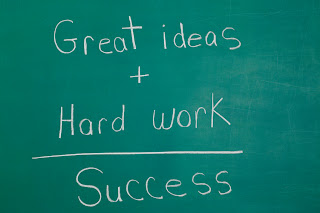Guest Blogger: Adrian
Wood - Co-Founder,
Shadowmatch USA
My thanks to April for allowing us at Shadowmatch to write a guest blog this week! I thought I
might comment on how the difference in team behaviors can have a dramatic
impact on success.
The different working behaviors of teams are
like the different poles on a magnet except that different behaviors actually
tend to repel (drive conflict) in teams vs. attract. It’s the single biggest
reason that teams fail: when they are split between “north and south” in the
way that they approach work.
However, if you can get your team to
understand their polarity and see how they are different, then something
wonderful happens: they start to leverage each other in ways that drive
productivity and efficiency across the team. In other words, they stop acting
as individuals and start to work as a cohesive group.
At Shadowmatch, we saw this in real life at a Fortune 500
sales team. The team consisted of pairs of account execs focused on large
corporate prospects. What was it about the pairs that determined success?
·
Pairs with different
working behaviors successfully divided work between relationship and tasks,
detail and high level, aggressive and thoughtful tactics. They were always able
to adapt to their prospects.
·
Pairs with
similar working behaviors competed for activities and often “got in the way of
each other” trying to accomplish the same goals in the same way. They also had
“blind spots” that prevented them from connecting with different types of
prospects.
In your teams, you may not think you want
behaviors that potentially drive conflict, but if you look past the short-term
hurdle, you’ll see the long-term success that’s possible by embracing the
opposing poles.
Adrian
Wood
Co-Founder,
Shadowmatch USA










